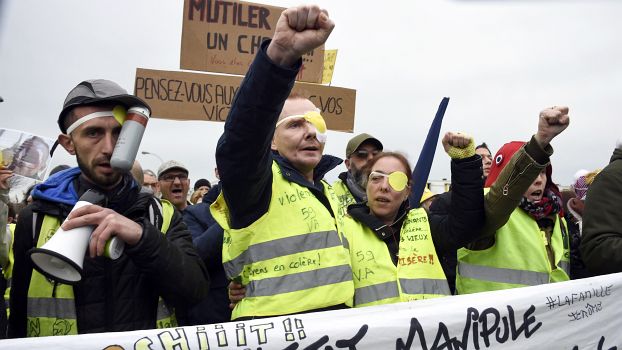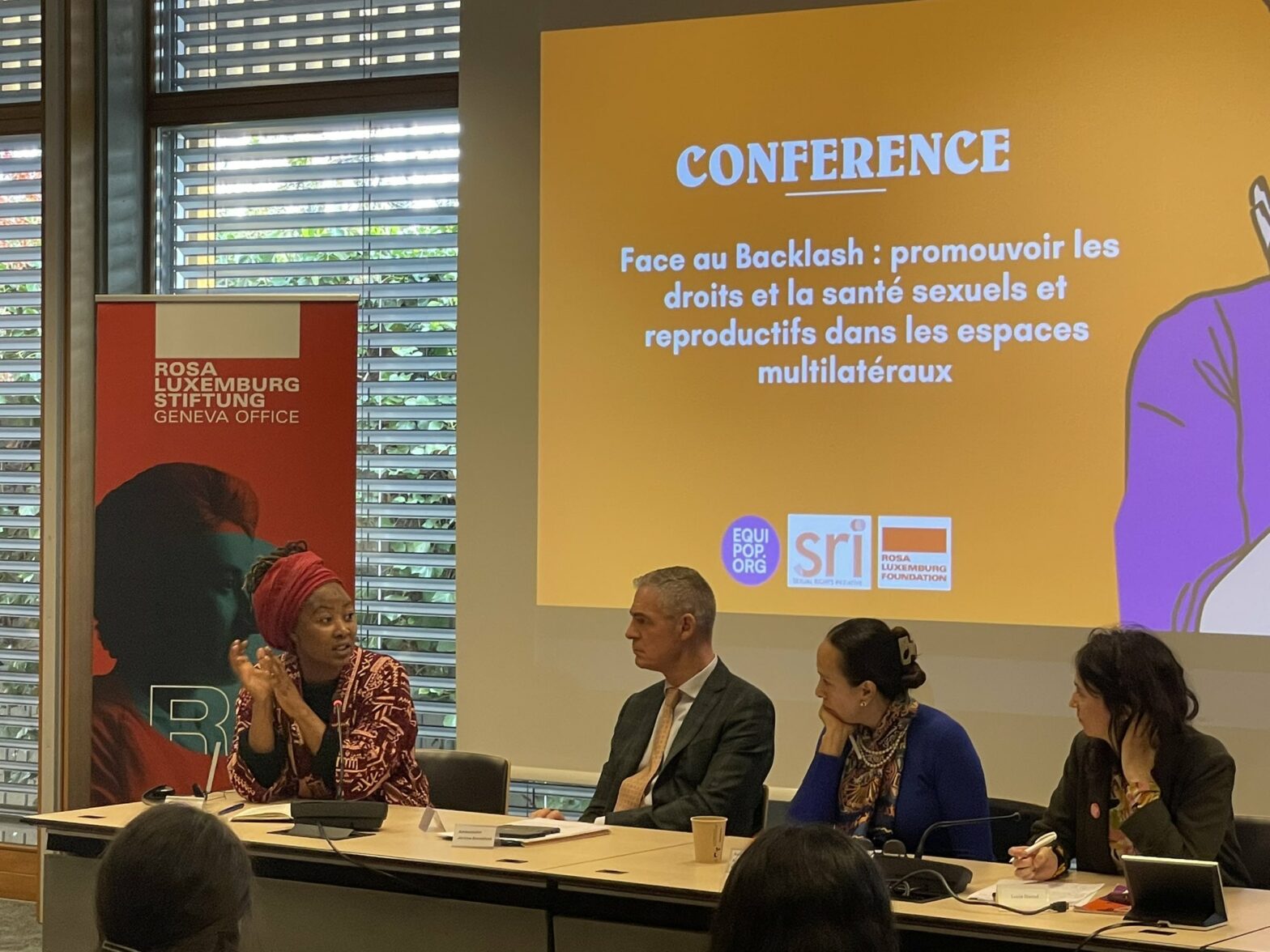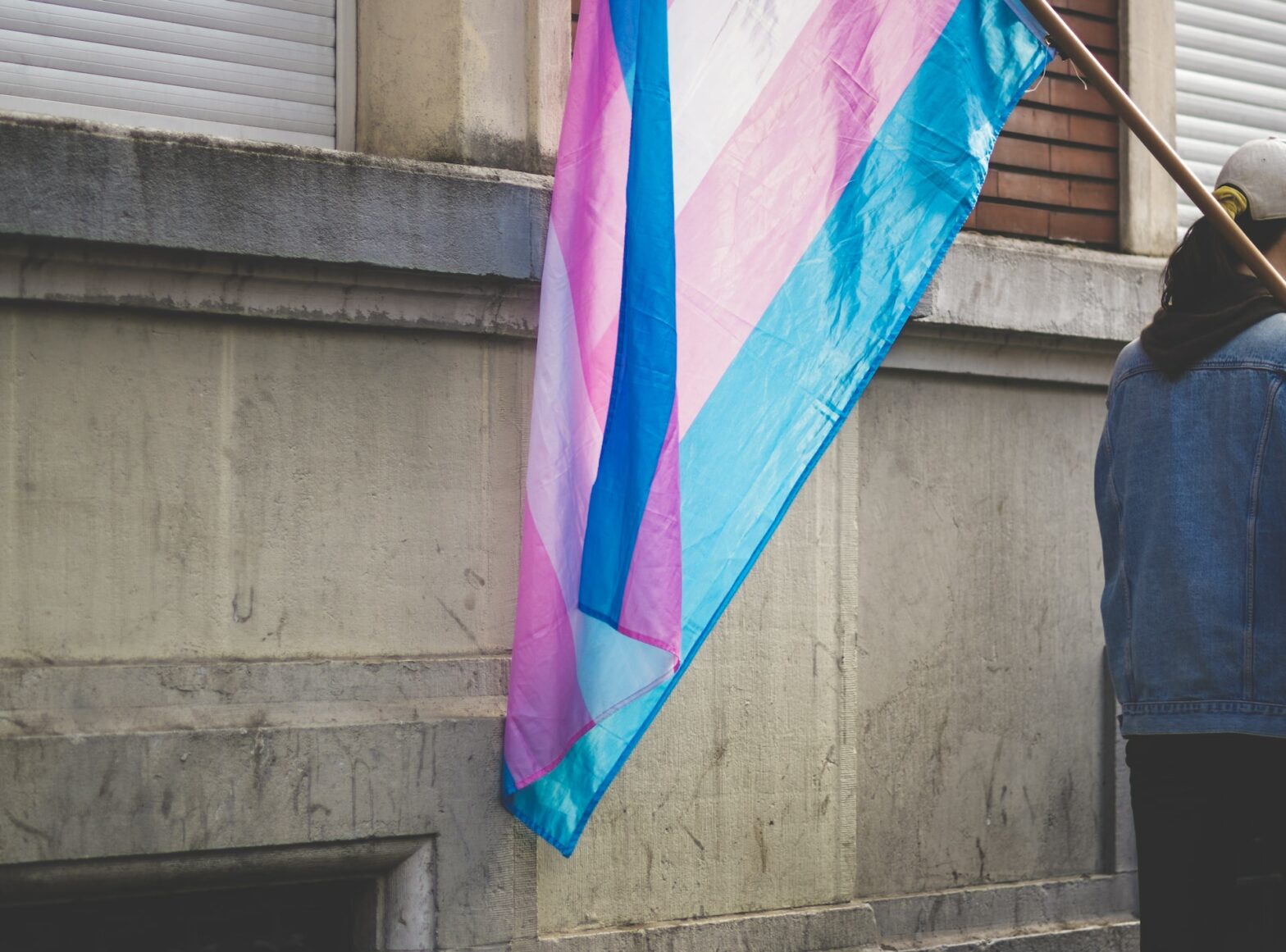Partager Twitter Facebook Email Copy URL
2019 marked a new cycle of global movements. Despite many differences, they also have much in common

“On est là, on est làaaa” (“We’re still here!”) sing the “Gilets Jaunes” in France as they celebrate the movement, now one-year-old. In a certain sense, this movement opened the current worldwide cycle of protest.
March against police violence in Valenciennes, northern France, 23 November 2019: Manuel C. sustained an eye injury after being hit by a police projectile during a “Yellow Vest” demonstration on 16 November. Francois Lo Presti / AFP, Francois Lo Presti / AFP
Nelli Tügel is an editor at the monthly newspaper ak. analyse & kritik and a freelance journalist. Translation by Hunter Bolin & Marc Hiatt for Gegensatz Translation Collective.
Not since the early 1990s has the world experienced such a simultaneous outbreak of generalized anger on the streets as in 2019, a commentator from the Economist noted in early November. That was before Iran and Columbia joined the ranks of countries in which mass protests have terrified governments, forcing many politicians to resign. As recently as the end of November, Iraq’s prime minister Adel Abdul Mahdi declared that he would step down. In doing so, he followed Lebanese Prime Minister Saad al-Hariri (end of October), Algeria’s President Abd al-Aziz Bouteflika, and his counterpart Omar al-Bashir in Sudan (both in April). In Chile, Prime Minister Sebastián Piñera is still in office, but had to announce a restructuring of his cabinet shortly after the rebellions began in October. Ricardo Rosselló, Governor of Puerto Rico, resigned from office in August after mass protests.
The fact that in many cases the measures which sparked the rebellions were hastily withdrawn attests to the enormous strength of the current protest movements. In Ecuador, this was a decree to liberalize petrol prices and cut workers’ rights, which the government wanted to enact in return for a loan from the International Monetary Fund (IMF). The fact that this loan was roughly equal in value to tax breaks previously granted to corporations and the rich further fuelled the anger of the people on the street. After a military intervention failed to stem the protests on the streets, the government put these plans on hold in mid-October. In Chile and Lebanon, too, planned fare increases and a planned tax on WhatsApp calls were withdrawn. In France, President Emmanuel Macron postponed a planned fuel tax increase as early as December 2018, shortly after the Gilets Jaunes movement began.
Once they had taken to the streets, protesters in all these countries declined to be quickly pacified again. The immediate causes were only catalysts, giving expression to a more fundamental dissatisfaction. The slogan of the Chilean movement sums it up: “It’s not about 30 pesos, it’s about 30 years”—in other words, the fare increase was just one aspect of a long-misguided policy framework in a country that has been a showroom model of neoliberalism.
Now in 2019, there has been and still is a series of protests in very different parts of the world: France, Algeria, Catalonia, Puerto Rico, Sudan, Haiti, Guinea, Iraq, Hong Kong, Lebanon, Ecuador, Chile, Iran and Colombia. It would be dubious to impose the same analysis on all of these without considering the specificity and heterogeneity of each movement. Nevertheless, the question arises as to whether all these protests have something in common and if so, how this “something” can be described.
Social Media, Social Question
First of all, the obvious: social media has become an integral part of twenty-first century protests. It is admittedly quite banal to make this observation nine years after the Arab Spring. But it becomes interesting when social media begins to replace traditional forms of political organization such as parties and trade unions, and when debates on Facebook are preferred to face-to-face meetings. This was broadly the case in the “Gilets Jaunes” movement in France, which in a sense opened the current cycle of protests. Here, Facebook was initially the communication tool of choice, but—and this is also instructive—it quickly reached its limits. In the end, the “Gilets Jaunes” chose the format of face-to-face debates on occupied roundabouts and in delegates’ meetings. According to the Guardian, as of mid-November more than 15,000 people had already taken part in “cabildos”, local assemblies in Chile.
The extraordinary weight of the so-called social question for the global protest movements is also obvious, as is the demand for democratization. Even if both aspects are weighted differently from country to country, they seem to be at least intertwined almost everywhere. It is precisely the combination of anger at concrete measures that are perceived as anti-social, the questioning of the entire political system, and the assumption that the two are interrelated that has proved to be a constant source of inspiration for protest movements.
As mentioned, the trigger for mass protests in Ecuador was an IMF decree, in Chile it was an increase in fares, and in Lebanon a plan for a new tax. In Iran, the overnight increase in petrol prices sparked rebellion, in Iraq high unemployment, in Colombia a neoliberal government package that included the privatization of public assets and the pension system, the abolition of the minimum wage, wage cuts and at the same time corporate tax breaks; in Haiti, too, the desolate social situation and petrol shortages are causing unrest. However, the focus on the social question does not mean that the desires and demands of feminist or indigenous activists lose significance—on the contrary: in Lebanon, Sudan, Chile, Ecuador, or even in the protests against the removal of Bolivian President Evo Morales from office, a great number of women and/or indigenous groups are active. They leave no doubt that the class question cannot be separated from feminist and indigenous demands for equality.
Almost everywhere, the foundations of governments and political systems were very quickly called into question. In Chile, for example, where the constitution drawn up under the military dictatorship of Augusto Pinochet establishes neoliberal economic and social policies as the basis of society, demonstrators are demanding a new constitution to be drawn up by a constituent assembly; in Lebanon, the political system established after the end of the civil war in 1990, which distributes offices within the state along denominational lines, is under scrutiny; in Iraq, party offices as symbols of the hated political system have been attacked and government buildings stormed. In Algeria and Hong Kong, on the other hand, the protests were initially triggered by attacks on the remnants of democracy: in Algeria, the long-term ruler Bouteflika was met with resistance after he announced his intention to seek a fifth term in office, and in Hong Kong a bill that would allow prisoners to be extradited to China. In Catalonia, too, progressive democratic demands are closely interwoven with the independence movement and are formulated in opposition to the central Spanish state.
Another similarity between the protest movements is the fact that in most cases, quickly implementing or retracting the measures has not helped the challenged leaders to put an end to the protests. Instead, such concessions encourage the movements to continue. In many places, the protesters have shown astonishing perseverance and stamina: in France, weekly demonstrations have been going on for a year now, in Haiti since February, in Hong Kong since the summer, in Iraq despite extreme repression since the beginning of October, and similarly in Chile. Activists in the capital Santiago de Chile projected the slogan “We won’t return to normality, because normality was the problem” onto a building, neatly summarizing a theme that seems to concern many people who are part of this worldwide revolt.
Organization
Many leftists also see the global wave of protest as confirmation that the classic forms of organization of the labour movement—union and party—are now obsolete or have even become a shackle that tends to hold rebellions back. In this context, the current movements are sometimes described as liberated from ordering and restraining leaders; at first glance, the rapid successes and enormous power they have been able to build up in the streets in a short time seem to confirm this. However, the emphasis on spontaneity may also partly be a projection. For example, in the case of Chile, at the very beginning of the protests Raúl Zibechi pointed out the ignorance among those who were all too surprised by the mass movement there. According to Zibechi, there have been a number of feminist, student and indigenous protests and attempts at organization in recent years, and the current movement is building on these. Nevertheless, it is true that the uprisings—whether in Iran, France, Chile, Lebanon or Iraq—do not seem to have organizing centres, but rather act more or less spontaneously. Leaders are rejected by many and people’s desire to represent themselves is widespread.
If you look at Great Britain or the US, you will find that here, too, a new generation is up and coming. As a number of industrial disputes in the US have shown, this is stirring up the unions and putting pressure on established parties such as the Labour Party in Britain and the Democratic Party in the US. The new generation is clearly looking for strategies and instruments for successful left-wing and social politics in the very countries of the Global North where Margaret Thatcher and Ronald Reagan took on trade unions and disempowered them in the name of neoliberal hegemony. The identification as working class, which had been declared outdated in the 1990s and 2000s, even by many leftists, is also experiencing a remarkable comeback in the USA, effecting a proud and—in contrast to Trumpism—progressive reconquest of workers’ subjectivities. This shows that the classical forms of organization still (or once again) have something to offer: they make it possible to transform common experiences into promising strategies. Whether and how the new, spontaneous insurgency movements will succeed in this is still an open question, however. In any case, the simultaneity of both developments—the rejection of leaders and traditional forms of political representation in many places, the return of trade unions and new party-like organization in some—is striking. Taking both of these factors into account prevents premature prognoses about progressive articulation and left-wing organization in the future.
However, it is also true that the current global movements must be viewed in relation to earlier attempts to put an end to injustice and oppression. Otherwise they can hardly be understood. Even if it is not always explicitly articulated, the current protest cycle also bundles reactions to quite different attempts in recent years and decades to establish left-wing politics. In Latin America these are the left and centre-left governments of the 2000s; in Iraq, Lebanon and Algeria the Arab Spring of 2010/2011; in Iran the Green Revolution of 2009; in France the failed trade union struggles of recent years. And last but not least, there is the global experience of the world economic crisis of 2008/2009 and the largely failed attempts to prevent the poor, women, wage earners and young people of this world from bearing the economic consequences of this crisis. Whether in Hong Kong, Iraq or Chile, the global economic crisis has left its mark on an entire generation for whom something like social mobility is probably only known as something from history books at best, but who are now taking to the streets, to fight for that as well: for being able to put their hopes in a future again at all.
Latin America’s Left-Wing Governments and the Arab Spring
The simultaneity of the movements may be partly due to chance, partly to the fact that revolts are mutually reinforcing, and partly to the fact that the past two decades have seen millions of people on the streets in many places around the world; two decades which have swung between powerful attempts to formulate alternatives, revolts, and brutal repression.
For example, a thoroughly contradictory process has been underway for years in Latin America, an epicentre of the current protests. On the one hand, the right has re-grouped: following the death of Hugo Chávez in 2013 and the loss in the parliamentary elections in December 2015, Nicolás Maduro’s government in Venezuela is in a permanent state of crisis. In August of the same year in Brazil, the President of the Workers’ Party (PT), Dilma Rousseff, was removed from office. Her predecessor, Lula da Silva, went to prison. Last year’s elections were finally won by the far-right Jair Bolsonaro. In Uruguay, on the other hand, the Frente Amplio left-wing alliance recently lost an absolute majority after three legislative periods of stable government. Here a right-wing conservative government coalition is now being announced. On the other hand, the neoliberal Macri government in Argentina has been voted out of office.
Anyone who looks at the uprisings in Chile, Ecuador and Colombia in this context will remember the cycle of protests against neoliberalism which seized the continent at the turn of the millennium and which led to a decade of left-wing governments. Now, however, people have had experience with left-wing and centre-left governments in Venezuela, Bolivia, Argentina, Brazil, Ecuador, Nicaragua and Uruguay—and at times been disappointed. Even if the parties that governed still have a considerable base and people still place their hopes for a better life in the government route, as became apparent in Brazil after Lula’s dismissal at the beginning of November, these prospects are likely to be much more subdued than at the beginning of the millennium. The raw materials boom is over and with it the economic basis of those social programmes that led to a significant reduction in poverty in Latin America. In Ecuador, some of the protests were also explicitly directed against extractivism, a term used to describe an extremely environmentally damaging model of development.
In Algeria, Iraq and Lebanon, however, people’s experiences with uprisings have been different. The Arab Spring, the movement that brought millions of people from Tunisia, Egypt and Syria to the streets to topple dictatorships nine years ago, resulted in a phase of brutal reaction—in Syria a civil war lasting for years, in Egypt a military dictatorship. At the same time, the Arab Spring taught an entire generation that despotic rulers can also be successfully driven out.
Repression and Solidarity
The uprisings of 2019 have claimed many lives. More than 400 people have already been killed and around 15,000 injured during the protests in Iraq, according to a tally by news agency AFP at the end of November. Internet censorship in Iran has made it very difficult for any news to reach the outside world. However, there have been reports of demonstrators being massacred, for example in the southwest of the country. So far, security forces in Chile have killed 23 people during the protests. In addition, quite a few people have been seriously injured, including some who have lost eyes, as well as thousands of arrests. There have also been deaths and injuries in France, Algeria, Sudan, Ecuador and Haiti.
Despite the at times extreme level of state repression, the people usually cannot be driven off the streets. Their protests produce hope and lasting, impressive images, even across national borders and continents. Whether it be the “Nubian Queen”, the woman in Sudan who stood on the roofs of cars and stirred up the crowd with chants; be it the protesters in Beirut, who sang the “Ode to Joy” together; the masked couple in Chile who danced a tango on the street between burning barricades; the thousands of women in Santiago de Chile, who created their own performance to stand up against sexualized violence; or the sooty demonstrator in Iraq who took a seat in a luxurious armchair during a street theater performance in Basra, wearing a gas mask and helmet. All these images went viral and were viewed millions of times worldwide. The Chilean women’s performance against sexualized violence is now being copied by women all over the world.
Why is all of this happening? Because these pictures touch and impress us, because they show how in a world of Donald Trumps, Jair Bolsonaros and Matteo Salvinis, the arrogance of the powerful is met with courage, solidarity and dignity. In Iraq, Lebanon and Sudan, the protest movements have overcome the sectarian and ethnic divisions propped up by the ruling classes in recent decades; women have been and continue to be at the forefront of the protests in Chile, Lebanon and Sudan. The images and slogans show that on the one hand the age of neoliberal hegemony is finally coming to an end, but that on the other hand there are alternatives to allowing extreme right-wing, protectionist and authoritarian forces to fill the resulting political vacuum. Of course, these alternatives have not been fully formulated; for the time being they remain only a hunch. Nevertheless: the search for our lost future has long since begun.



